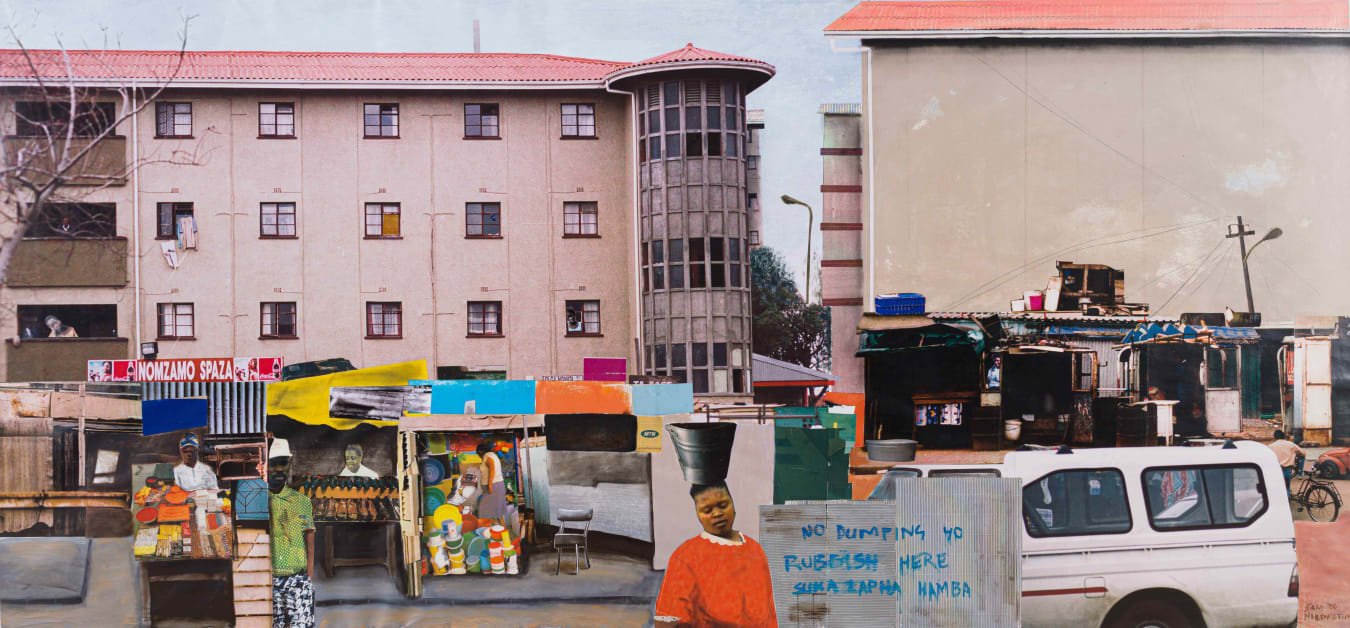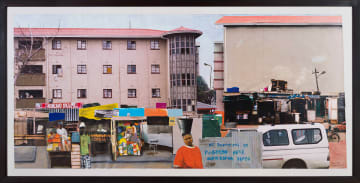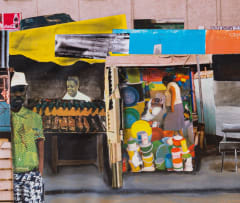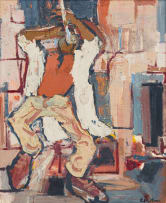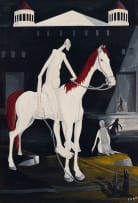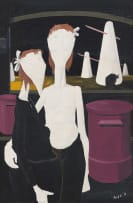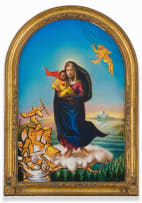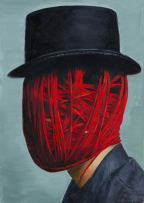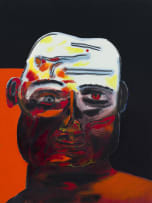Johannesburg Auction Week
Live Virtual Auction, 16 - 17 May 2022
Evening Sale
About this Item
signed dated '06; dated and inscribed with the artist's name, the title and the medium on a Goodman Gallery label adhered to the reverse
Notes
- What inspires your work? Was there a particular event that motivated your unique style?
I am inspired by my surroundings and where I come from. Street scenes feature prominently in my art, my admiration for other artists is a factor, music, and my own experiences all play a part. Studying at Rorke's Drift in the late 1970s impacted on my art - living with the village people, studying their rural life and comparing it with city life of where I come from.
- How did the collage technique that you frequently use in your practice come about?
When I started to do collage, it was out of experimentation. This started many years ago when I was at Rorke's Drift. I used to tear papers from magazines and put them together to create a different image.I continued doing this when I studied atthe Johannesburg Art Foundation under Bill Ainslie.
- How do you go about creating an artwork with collage?
In the main, I use cuttings from magazines, my family albums, my own photographs, books, cloths, steel and other found objects. There is a lot though that goes on before I can even start with the actual collaging. I have to think of a theme and conceptualize it. Then think of how whatever image I have in mind has to be executed, how much of the acrylics/oils do I need versus the other materials. The perspective in the image is determined by the sizes of the images.
- You often mention Romare Bearden as your favourite artist. What is it about his art that fascinates you?
When I was at the Johannesburg Art Foundation, Bill suggested that my work was very much like that of the American artist, Romare Bearden, who I knew absolutely nothing about at that point. From then onwards, I became very interested in his work and sharpened my skills in the process. Romare Bearden breaks the norms of proportion but still gets the message through. He uses colour and black and white excellently.
- Please tell us more about your time at the Johannesburg Art Foundation in the 1980s.
I studied there with a lot of artists from different backgrounds, including William Kentridge, David Koloane, Ezrom Legae, among others. I had to make sure that I worked hard and proved myself as a young and upcoming artist. I needed to stay in the straight and narrow to produce.
- During that time, you participated in
the Thupelo Workshops. Did these have an impact?
The Thupelo Workshops gave me an opportunity to interact with other artists, local and international. We were encouraged to get out of our comfort zone and experiment with other forms and materials. I used gel and acrylics for the first time at a Thupelo Workshop in Rustenburg. We were also encouraged to experiment with abstraction and to paint non-figurative images.
- Why is 'the interior' so important in your art?
I worked for the SABC as a studio set designer. I worked with a team of people including set dressers. I think I always had a dormant interest in 'dressing-up' my designs. I would always have some input about how I thought the final product should look.
- Why are you drawn to the subject of Jazz?
I was inspired by my late brother, Rankie Ramponeng, who was a jazz collector and musician. I feel that every time I do a jazz piece, I pay homage to him.
